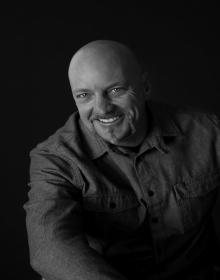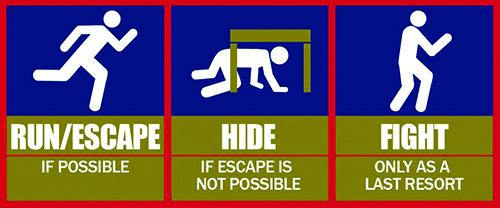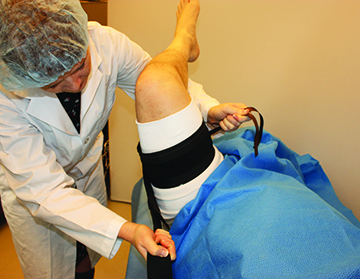Thus far in 2021, active shooter events have occurred over 150 times in the United States. People are going about their business — be it school, work or play — and in an ear-splitting instant, life turns from normalcy to chaos, confusion, and potential death. This is when the instinct to survive kicks in, and you have three options: Run, Hide, Fight (RHF).
However unfortunate, this patently American phenomenon could occur at any point. It is important for survival to understand the RHF protocol and why it presents an actionable methodology for dealing with danger.
Run For Your Life
When the shots ring out, the shock of gunfire could make you freeze — as panic temporarily seizes your ability to move. You must overcome crippling fear
and use your ambulatory efficiency to create as much space as possible between you and the shooter. If you are outdoors, you have the advantage of square footage, and you are wise to get as far away as possible as quickly as you can. As you flee, even if you assume others have called 911, call anyway. Your coordinates and your perception of the events could give police responders crucial intel for handling the situation. Captain Michael Gross of the Glendale Police Department offers a bit of sound advice, “Don’t run blindly, pick a direction based on good knowledge, and encourage others to run with you.”
Hide Smart
If you are indoors during an active shooter event and you run, seek to escape the confines of the building immediately. If exit is not an option, you must use the building itself and its internal structure as defense. A room with a door which can be locked is an excellent option, turn off all lights and be as silent as possible. Close all blinds and, as you call 911, speak quietly and be sure to silence your phone — as a ring-back or text notification could alert the shooter to your whereabouts. Brick walls are preferable, as they can be impenetrable by some bullets, but the main idea is to put as much physical matter between you and the shooter. Stairwells, while seemingly protective, can also be a trap if you are in a high rise building and there are multiple shooters. Captain Gross offers actionable advice for this situation. “We have never had an active shooter breach a locked door.” He explains. “Getting behind a locked door is your best chance for survival. But don’t lock yourself in, someplace easy to get into and out of is best.”
Fight Like Hell
If your hiding place is discovered, you may be in a position where fighting is your only option for survival. Your 911 call, while received, will take crucial minutes (anywhere from seven to 10) to be acted upon by the local law enforcement authorities. You must fight back with whatever tools are at your disposal. Captain Gross reinforces the notion of using the resources at hand to fight back, “Anything can be used,” he begins. “One of my personal favorites is the fire extinguisher. They are present in all buildings per the fire code, they make it difficult to see, difficult to breathe and really hurt when you get hit with one.”
Inside Reasons
Captain Gross also offers key insight into the backgrounds of many active shooters. “Active shooters are not trained; they have very little skill; the average person can succeed against them easily. Because they have no or little training they are not prepared for resistance. Dr. John Nicoletti [an expert in workplace and school violence based in Lakewood, Colorado] calls this the ‘thrill of the thought.’ When they plan out their act, they don’t plan for resistance, so they don’t know what to do when it comes. This is also one of the reasons why active shooters commit suicide in such high numbers.”
Captain Gross also presents important insight into the motivations of many active shooters, citing workplace discord as a catalyst. “70%-ish of active shooters come from inside the business (employees or recently fired).” He explains. “They exhibit behavior over time that, if you are sensitive to it, telegraphs their intentions and gives opportunity for intervention. 82% or so broadcast their intentions to others (usually through social media). Of the roughly 30% left, the vast majority of those are domestic violence attackers. Active shooters plan their assaults. They make these plans for very different reasons.”

Fire extinguishers are common throughout public buildings and can be used to distract or disable an assailant.
If you find yourself in the confines of an area which you cannot escape, attempting to reason with an active shooter will only give them a greater focus on your whereabouts. Also, whilst under duress, talking will only drain your energy from the mission at hand which is to subdue the shooter by any means possible. Any martial arts training you may have could serve you well here — as in most disciplines, self-defense is the directive.
Addendum To The Protocol
Since the RHF protocol was established in 2012, a fourth element is becoming an apparent addition to the mindset — hemorrhage control. This is the idea that every citizen — while understanding running, hiding and fighting — should also have fundamental knowledge on how to stop bleeding caused by a gunshot wound. This applies not only to yourself, but to those around you. Applying a tourniquet to a limb or direct pressure to a wound can buy a victim precious minutes while help arrives. Captain Gross explains, “Have an active shooter plan for your business, get training (both in active shooter response and basic hemorrhage control). Give good information, description and whereabouts. When police arrive, have NOTHING in your hand, don’t grab the officer, don’t pull the fire alarm.”
Hemorrhage Control
Injuries to the head or torso require direct pressure with some sort of dense, absorptive material. In the event of a wound to an arm or a leg, a tourniquet can be used to control the bleeding. In an active shooter scenario, you will have to improvise with whatever materials you have immediate access to. Begin by pinpointing the exact location of the wound and exposing the skin. Inform the victim that you will be applying a tourniquet, as their already severe level of pain will be temporarily increased. It is important that the tourniquet be applied between the extremity wound and the heart. The American Red Cross recommends placing the tourniquet two inches above the wound. Use a cloth, towel, scarf or strip of clothing to wrap around the limb and tie it with a regular square not. Then, you will need to apply what is known as a windlass, which is a stick or a ruler — anything strong enough to be used to twist the tourniquet tighter. Place the windlass on the square knot and use the loose ends of the tourniquet to secure it with another square knot. Then, twist the windlass to tighten the tourniquet until the bleeding stops. Once the bleeding has stopped, use another strip of material to tie the windlass to the victim’s limb so that it stays tight. First responders will take over once they arrive, yet be advised that no tourniquet should be left in place for more than two hours.
Regardless of whether you run, hide or fight — the life you save could be your own at the very least. In a best-case scenario, you could help those around you, and if they have the same mindset, perhaps they can help you.




